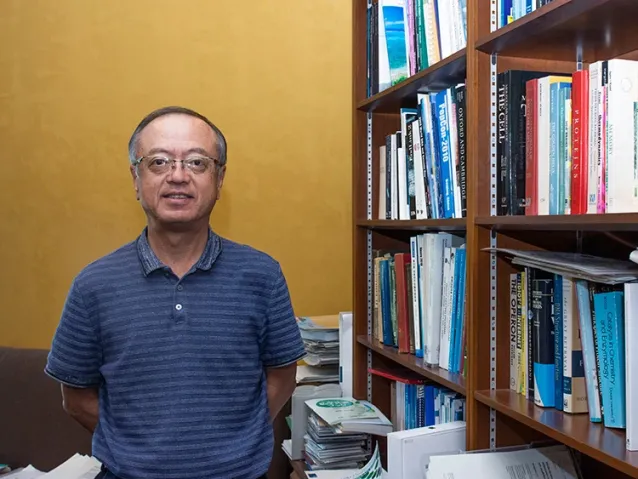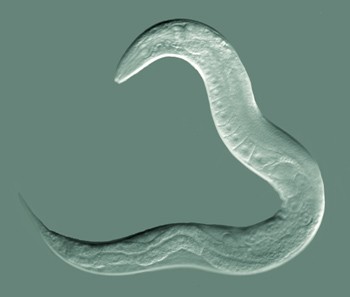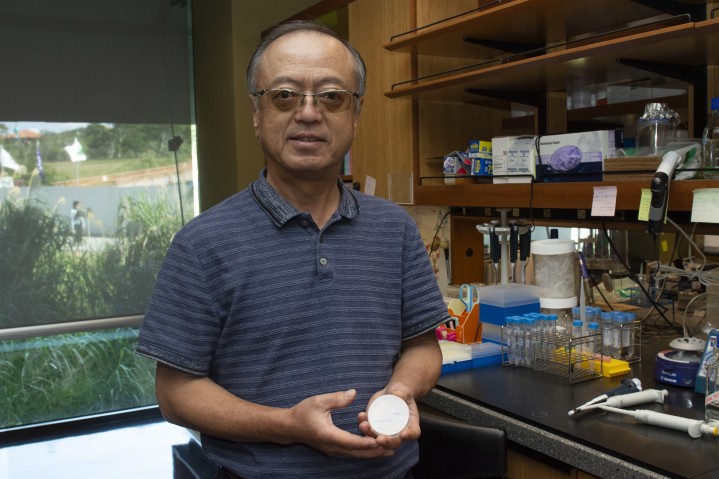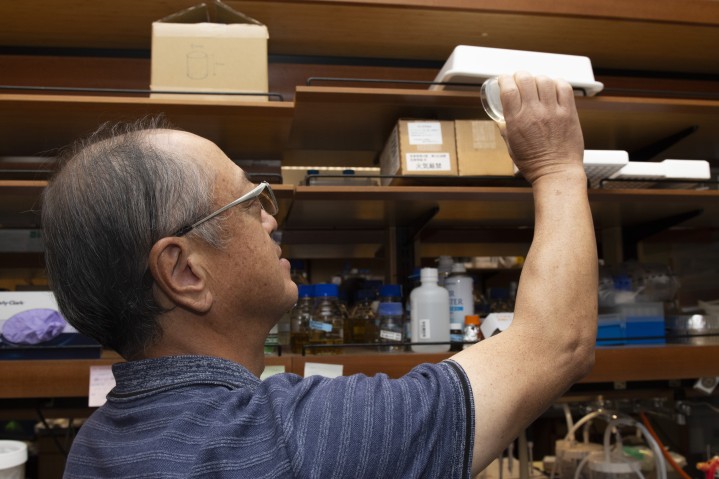OIST professor explores secrets underlying healthy aging

The latest OIST column in the Asahi Shimbun GLOBE+ is out now! This month, science writer Dani Ellenby interviewed Professor Ichiro Maruyama, about his research on little worms and how they can provide insight into aging-associated diseases.
The article is in Japanese, but the original English version can be read below.
OIST professor explores secrets underlying healthy aging
Okinawa, the southernmost prefecture of Japan, is famous for its sparkling oceans, white coral sand beaches and relaxed lifestyle. But this small chain of islands has also long been a source of fascination for those seeking the secrets of longevity. Designated as a “blue zone”, an area where people live longer, healthier lives, Okinawa has one of the highest proportion of centenarians in the world, with 83.62 people over 100 years old for every 100,000 inhabitants.
While this statistic seems impressive, Okinawa is not exceptional within Japan – a similar trend is playing out across the whole country. As a nation, Japan has the highest rate of centenarians in the world, with the total number climbing to over 80,000. Over recent decades, better healthcare and lower birth rates have shifted the demographics of the Japan’s population to one of a super-aged society.
This transition is bringing many unprecedented challenges, including economic strain due to growing healthcare expenses. As people age, their risk of developing aging-associated diseases, from cardiovascular disease and cancer to Alzheimer’s and Parkinson’s disease, increases. Keeping elderly people healthy for longer through better prevention and treatment of aging-associated diseases, is now becoming critical.
For one scientist, Professor Ichiro Maruyama, who has worked at the Okinawa Institute of Science and Technology Graduate University (OIST) since its foundation, many of the secrets to healthy aging may lie within the genome of a curious little worm called C. elegans.

Professor Maruyama first started out with these tiny critters in the late 1980s at the MRC Molecular Genetics Unit in Cambridge, UK. There, he worked with Professor Sydney Brenner, Nobel Laureate and founding father of OIST Graduate University, who pioneered the use of these worms to study human diseases.

“C. elegans has so many advantages as a model organism – they are cheap and easy to keep, and their body plan is complex enough to be relevant to humans but simple enough to be well understood,” said Professor Maruyama. “For many of our genes, there’s a similar gene present in the C. elegans genome, which can help us understand the genetic basis of many diseases.”
For aging studies, C. elegans also have another advantage over other traditional model organisms such as mice.
“C. elegans have such short lifespans, measured in days rather than months or years. So we can get results very quickly,” Professor Maruyama explained to me.

Currently, Professor Maruyama is using these little worms to look at how aging affects the nervous system.
In all animals, from humans to C. elegans, the nervous system – made up of specialized body called neurons – controls how we move, behave, think and remember. As we age, these neurons can become damaged, leading to diseases that affect motor ability, like Parkinson’s, or cause us to lose our memories, like Alzheimer’s.
Through his work in the lab, Professor Maruyama has identified mutant strains of C. elegans where the speed at which the worms move, and the distance they are able to travel decreases as they age. Now, he is starting to pinpoint what mutations cause these declines in movement ability.
In his most recent paper, his team identified a specific mutation within a gene called hda-3, which contains the instructions needed for cells to build a specific enzyme. By biochemically modifying DNA, this enzyme can alter the activity of other genes.
“Some of the genes which hda-3 repressed, we think are crucial for protein degradation,” he told me.
Inside our bodies, our cells constantly pump out the proteins needed to keep us alive. But as they are produced, some may fold incorrectly and be unable to function. Our cells have therefore evolved ways of destroying these non-functional proteins.
But if the protein degradation machinery breaks down, this can spell disaster, with non-functional proteins accumulating within the cell.
“We see protein accumulation within neurons in many human diseases – such as Huntington’s, Parkinson’s, Alzheimer’s and ALS. This shows that even in C. elegans, this work can help us understand how disease occurs in humans,” said Professor Maruyama. “And perhaps in the future, we can use genetic engineering, or drugs, to promote proper protein degradation.”
Now, Professor Maruyama wants to use the worms to study how aging impairs cognition and memory.

Compared to humans, C. elegans are very simple – they only have 302 neurons, compared to 68 billion just within the human brain. But remarkably, these worms can still learn and remember.
Because there are so few neurons, scientists have already mapped all the neurons within the worm – a feat currently impossible in humans.
“The goal now is to determine which neural circuits are needed to form memories and which genes are involved in maintaining the function of these neurons,” said Professor Maruyama. “This could give us real insight into treating or preventing cognitive deficits and therefore could help us provide the elderly with a better quality of life.”














